The Top 6 Must Try Foods at Lake Hamana
Lake Hamana is blessed with nature such as mountains, rivers and the ocean. All are abundant with nutritious ingredients such as different kinds of fishes and marine resources. Visitors are able to taste the fresh food. It is also recommended to experience some of the thriving marine sports around Lake Hamana, and after have a gourmet meal to revive yourself.
Unagi (grilled eel rice box and grilled eel rice bowl)

Lake Hamana is said to be the birthplace of eel (unagi) farming. The brand name of Hamamatsu unagi has a long history of over 100 years. There are two different eel dishes preparation styles. The Kanto (Tokyo area) style is known for being moist and tender. The meat surface of Kansai style is flavorful and slightly crispy. The area around Lake Hamana is said to be the boundary between Kanto style and Kansai style. You can taste both styles right here!
READ MORE! >>
https://www.inhamamatsu.com/recommend/hamanako-freshwater-eel.php
Eel restaurant list>>
https://www.inhamamatsu.com/japanese/food/unagi-restaurant-list.php
https://www.inhamamatsu.com/recommend/hamanako-freshwater-eel.php
Eel restaurant list>>
https://www.inhamamatsu.com/japanese/food/unagi-restaurant-list.php
Hamamatsu Gyoza (fried dumplings)
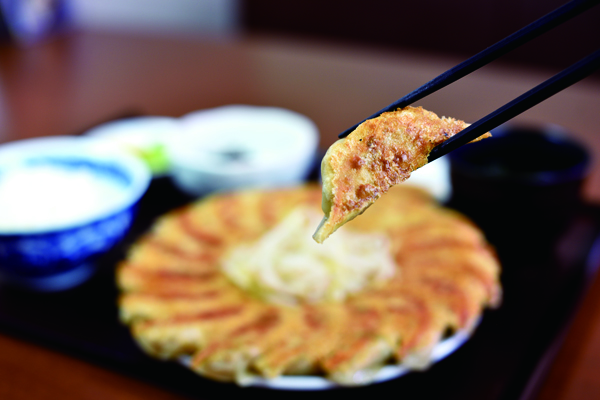
As the pig farming industry is thriving, and the neighboring area is abundant with cabbages and onions, these ingredients are used for making Hamamatsu gyoza, which have a healthy taste. The uniqueness of Hamamatsu gyoza is that they are fried in a flat pan in a circular pattern and are finished off by topping them with a fresh pile of boiled bean sprouts.
Even though there are many stories about the origin of boiled bean sprouts, but two versions are most commonly heard: "to fill up the gap" and "on which to rest your chopsticks and take a break."
Even though there are many stories about the origin of boiled bean sprouts, but two versions are most commonly heard: "to fill up the gap" and "on which to rest your chopsticks and take a break."
Fugu Blowfish (sashimi, hotpot, deep fried, grilled cod milt)
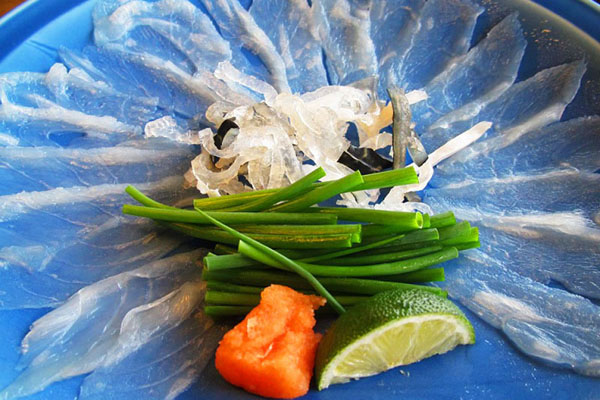 The photo reference: from Kanzanji website
The photo reference: from Kanzanji website When thinking of fugu (blowfish), many people would relate it to Shimonoseki (a place famous for fugu). However, many fugu naturally caught in the wild are in fact caught in the Enshu sea area here. Tessa is fugu sashimi, famous amongst foods. You can also have the fugu hotpot, Tecchiri, and enjoy thick fugu meat with a slightly chewy taste. Of course, it is possible to eat at a low price as everything is prepared and processed locally without any distribution costs.
Oyster
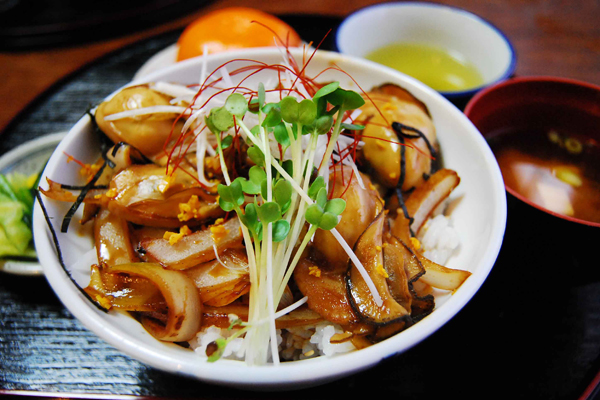
You can taste oysters at oyster shacks which are available around Lake Hamana from January to March. Also, the local gourmet delicacy, Oyster Kabadon (oyster rice bowl) which boiled oyster are grilled with unagi sauce and topped with slices of locally cultivated onions, seaweeds, and the orange peel, all over the rice is also popular.
Douman Crab
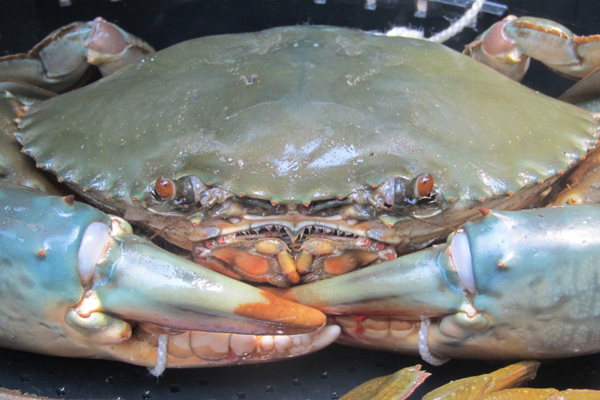 The photo reference: from Kanzanji website
The photo reference: from Kanzanji website "Green Mud Crab" is called "Douman Crab" by locals. The taste is quite rich, the unique sea aroma and the sweet smell spreads throughout the mouth. Due to unpredictable weather and fishing conditions, a stable supply of douman crabs (green mud crabs) is quite challenging. As a result, eating just one crab in Tokyo can cost tens of thousands of yen! It is said to be a legendary crab. You can taste it at the price unique to the locality hear at Lake Hamana.
Hamo (boiled pike conger, clear pike conger soup, and deep-fried pike conger tempura)
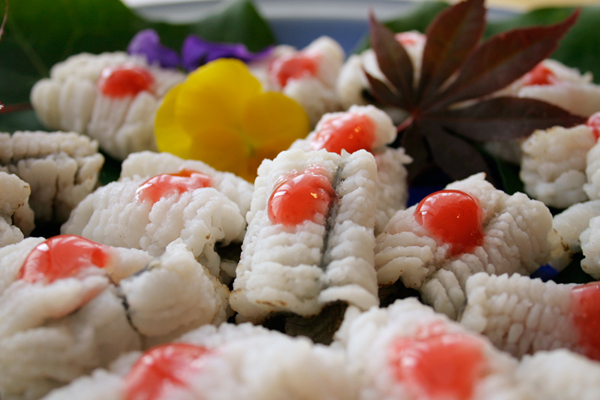 The photo reference: from Hamanako-Tourism website
The photo reference: from Hamanako-Tourism website Hamo, rich in amino acids that are components of savory taste, is a fish with a light taste but solid texture. "Hamo Otoshi" (boiled pike conger) is served with soy sauce and pickled plum. "Botan Hamo", this elegant osuimono (clear soup) is named from peony because it curls up into the shape of a peony when boiled. Come and enjoy the rich taste of Hamo!
WE RECOMMEND!!
Let's enjoy abundant activities at Lake Hamana as much as we can!
2019.10.2 update
Content may be subject to change after publication. Please also note that we are not accountable for loses and damages that may occur as a result of said changes.
Content may be subject to change after publication. Please also note that we are not accountable for loses and damages that may occur as a result of said changes.
- Hamanako Kanzanji Onsen, Tokiwasure Kaikatei
- Kikusui-tei
- Hotel Wellseason Hamanako
- Kanzanji Sago Royal Hotel
- Sansuikan Kinryu
- Hamamatsu Flower Park
- Hamanako PAL PAL
- Water Activity
- Hamanako ROPEWAY
- Hamanako PLESSURE CRUISE
- Hamamatsu City Zoo
- Rent-A-Cycle
- Kanzanji Onsen Autumn/ Winter Event Information!
- The firefly watching
- Lake Hamana Flower Festa 2019
- Take a break and explore the lake with a local
- Kanzanji Onsen Summer Event Information!
- The most recommended SIM CARD!






